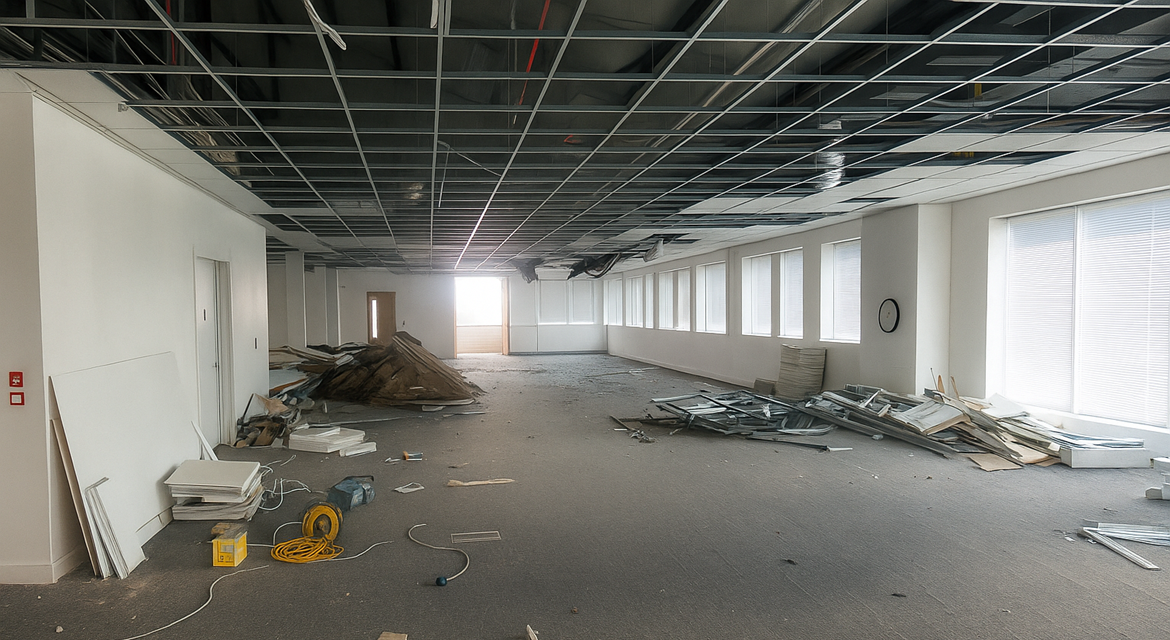What does a Building Surveyor do in a dilapidations case?

When a commercial lease ends, the condition of the property matters. Whether you are a landlord looking to restore your asset or a tenant aiming to meet lease obligations without overpaying, dilapidations come into play. This is where a Building Surveyor becomes essential. Their role isn’t just about inspecting walls and ceilings – it is about protecting financial interests, interpreting legal documents, and providing clarity in what can be a complex process.
What Are Dilapidations?
Dilapidations refer to breaches of lease covenants relating to the condition of a property. These are typically identified when a lease ends, although interim inspections can happen. In most commercial leases, tenants are required to keep the property in good repair, decorate it at intervals and return it in a prescribed state. When these obligations aren’t met, a landlord’s solicitor may serve a schedule of dilapidations, outlining the work that should have been undertaken to comply with the lease.
This is not simply a maintenance checklist; it is a legal claim with financial implications.
The Building Surveyor’s Role Explained
So where does the Building Surveyor fit in? They are the technical expert who understands both the fabric of the building and the legal framework of the lease. Their job is to bring structure, clarity and fairness to the process – whether acting for the landlord or the tenant.
For Landlords: Preserving the Value of the Investment
When working for a landlord, a Building Surveyor’s role often begins before the lease ends. They:
- Inspect the property and compare its current state to what the lease requires.
- Prepare a schedule of dilapidations, listing the breaches and what needs to be remedied.
- Provide cost estimates for those repairs.
- Negotiations with the tenant’s representatives to secure a financial compensation settlement or ensure repairs are in compliance with the lease.
- A well-prepared schedule from a Building Surveyor ensures that the landlord’s claim is justified, reasonable and enforceable.
For Tenants: Minimising Liability
From the tenant’s side, a Building Surveyor plays a vital role in limiting exposure. Early instruction is key to establishing the liability associated with the lease. When instructed by a tenant, Building Surveyors:
- Advise, sometimes 6 months prior to a lease end, the implications of the lease, the potential liability and works that can be undertaken in anticipation.
- Review the landlord’s schedule of dilapidations for inaccuracies or exaggerated claims.
- Cross-reference the lease to identify obligations that do not apply or may have been misinterpreted.
- Provide a detailed response that may challenge the extent or cost of certain claims.
- Offer expert advice during negotiations to reach a fair settlement.
In many cases, a Building Surveyor can significantly reduce the amount a tenant has to pay by filtering out unnecessary or overstated items. Their input often means the difference between a costly settlement and a fair resolution.
Dilapidations Are About More Than Bricks and Mortar
A common mistake is to see dilapidations as a purely physical issue. In reality, they are a legal and financial concern that hinges on both the lease wording and professional valuation advice.
For example, a landlord may claim £75,000 in respect of repair obligations, however if a Chartered Surveyor can demonstrate that the loss in property value is only £45,000, the claim may be capped accordingly. This is where Section 18(1) of the Landlord and Tenant Act 1927 comes into play, capping the claim to the actual loss in value.
A Building Surveyor’s understanding of this legal context is just as important as their ability to assess cut edge corrosion or diagnose cracking. It ensures that dilapidations claims are grounded in fact, not inflated by assumption.
Why Experience Matters
Dilapidations can get contentious. They involve money, legal interpretation and negotiation so experience matters. A Building Surveyor with experience in this area brings not just technical skill but negotiation strength, legal awareness and commercial focus. They’re not just ticking boxes – they’re safeguarding your position in a potentially high-stakes process.
Look for a surveyor who works closely with solicitors when needed, understands the full picture and has the ability to present a clear, persuasive case. That could make all the difference to the outcome.
Whether you’re leaving a commercial property or taking one back, the dilapidations process is something you want to get right. It’s not just about buildings, it’s about money, legal risk and peace of mind. A skilled Building Surveyor is your best ally in navigating that landscape. Their insight can save thousands, prevent disputes running to court and ensure the process runs smoothly.
Need Help with Dilapidations?
If you’re approaching the end of a commercial lease and want to make sure you’re protected, or you’re a landlord looking to safeguard the value of your asset, our expert Building Surveyors in Essex are here to help. At Fenn Wright, we have a proven track record in handling dilapidations cases for both landlords and tenants. We offer straightforward advice, practical strategies and full support tailored to your specific lease and property.